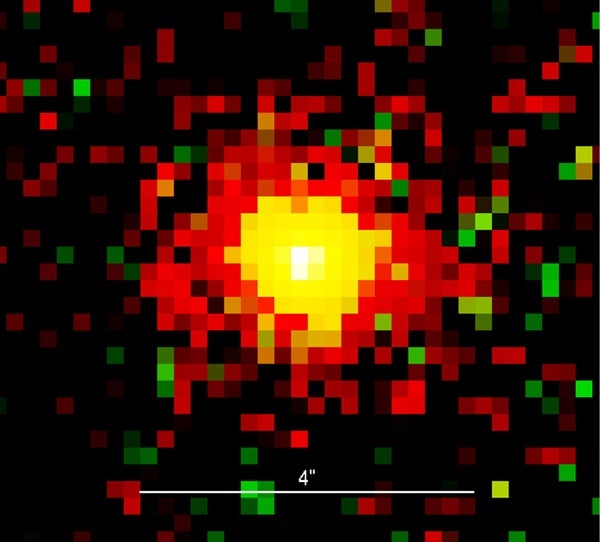University of Hawaii astronomer Tomotsugu Goto and colleagues have discovered a giant galaxy surrounding the most distant black hole ever found. The galaxy, which is 12.8 billion light-years from Earth, is as large as the Milky Way galaxy and harbors a supermassive black hole that contains at least a billion times as much matter as does our Sun.
“It is surprising that such a giant galaxy existed when the universe was only one-sixteenth of its present age, and that it hosted a black hole one billion times more massive than the Sun,” Goto said. “The galaxy and black hole must have formed very rapidly in the early universe.”
Knowledge of the host galaxies of supermassive black holes is important to understand the long-standing mystery of how galaxies and black holes have evolved together. Until now, studying host galaxies in the distant universe has been extremely difficult because the blinding bright light from the vicinity of the black hole makes it more difficult to see the already faint light from the host galaxy.
Unlike smaller black holes, which form when a large star dies, the origin of supermassive black holes remains an unsolved problem. A currently favored model requires several intermediate black holes to merge. The host galaxy discovered in this work provides a reservoir of such intermediate black holes. After forming, supermassive black holes often continue to grow because their gravity draws in matter from surrounding objects. The energy released in this process accounts for the bright light that these black holes produce.
To see the supermassive black hole, the team of scientists used new red-sensitive CCDs installed in the Suprime-Cam camera on the Subaru telescope on Mauna Kea. Satoshi Miyazaki of the National Astronomy Observatory of Japan (NAOJ) is lead investigator for the creation of the new CCDs and a collaborator on this project. “The improved sensitivity of the new CCDs has brought an exciting discovery as its very first result,” Miyazaki said
A careful analysis of the colors revealed that 40 percent of light around 9100 angstroms is from the host galaxy itself and 60 percent is from the surrounding ionized nebulae illuminated by the black hole.
“We have witnessed a supermassive black hole and its host galaxy forming together,” said Yousuke Utsumi from the Graduate University for Advanced Studies/NAOJ and a member of the project team. “This discovery has opened a new window for investigating galaxy-black hole co-evolution at the dawn of the universe.”










